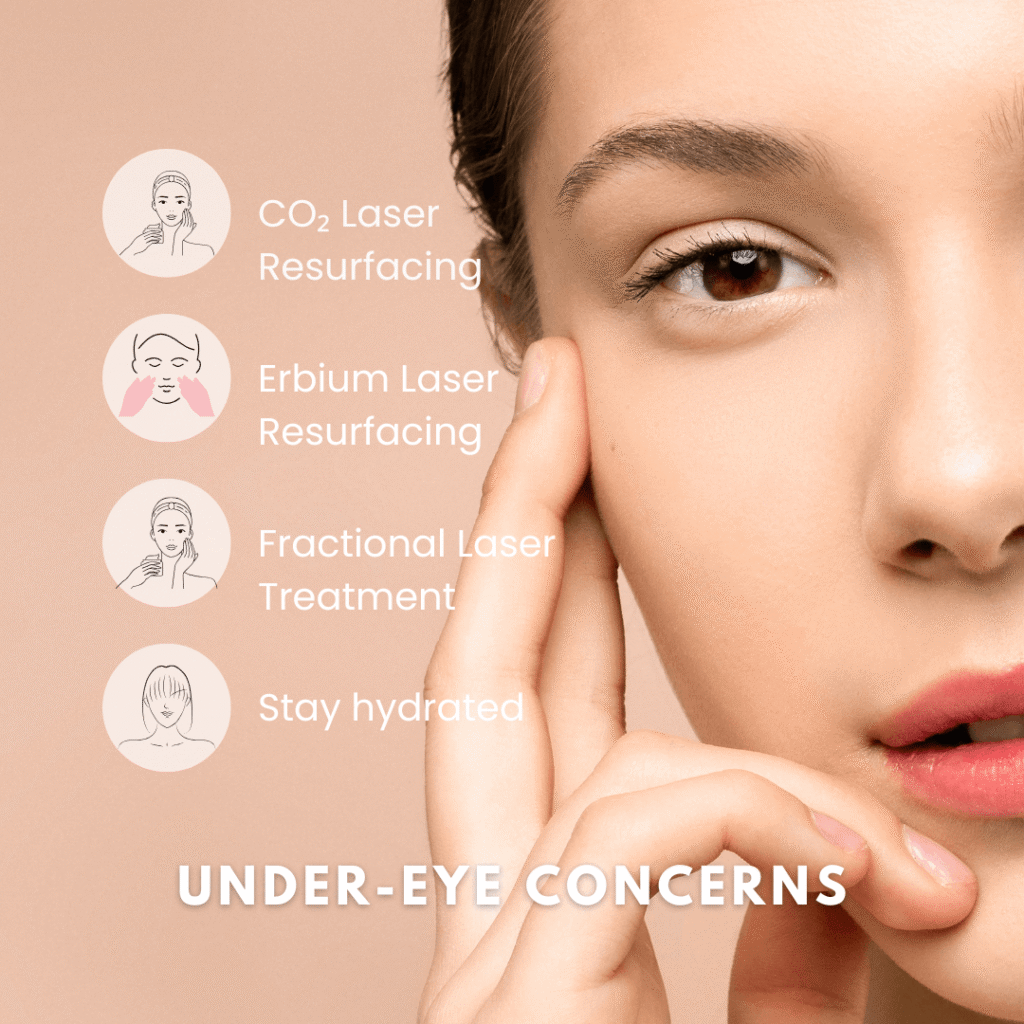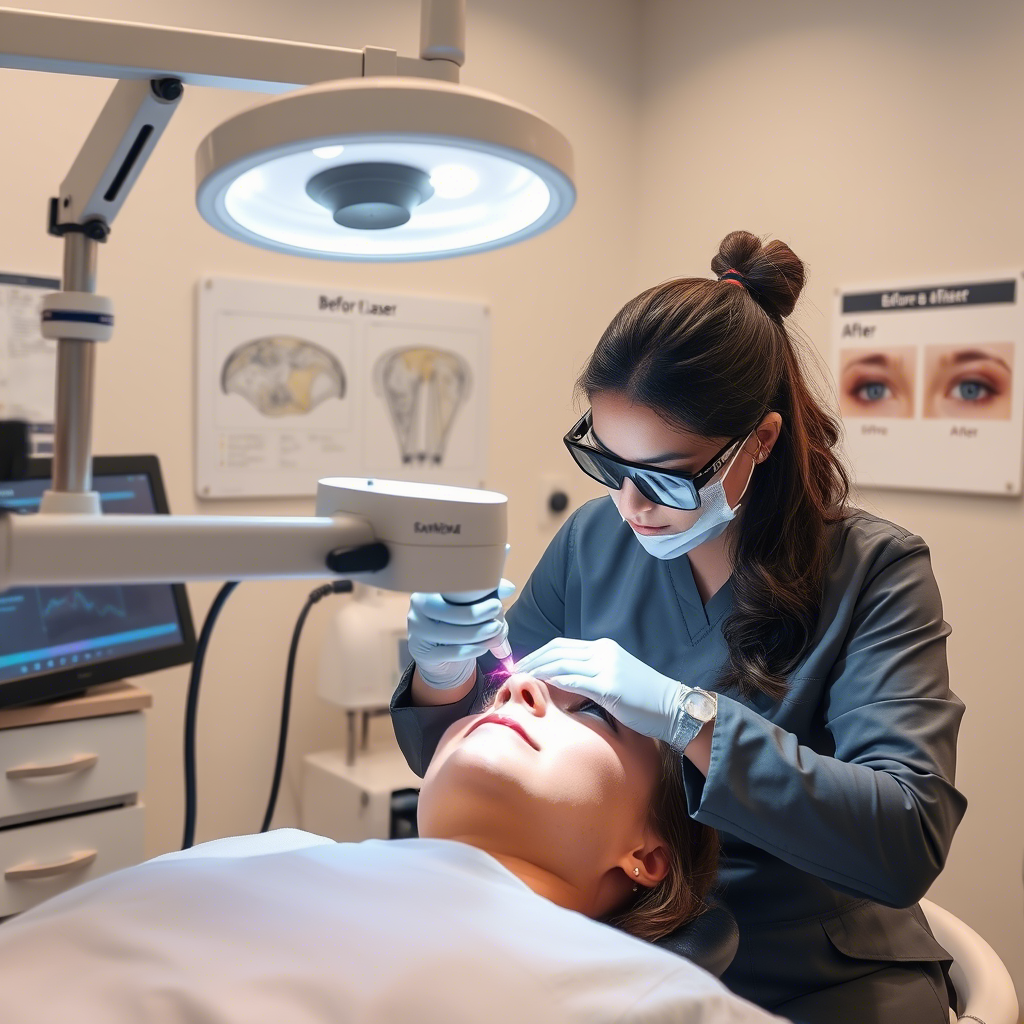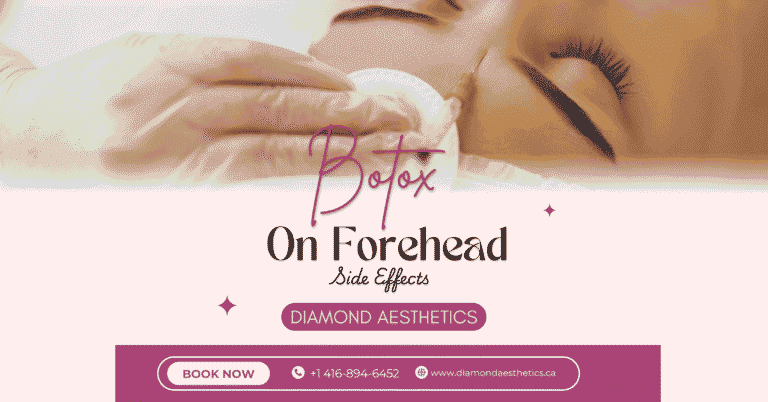The skin around our eyes often shows signs of aging and fatigue first, making under eye laser treatment a popular solution for those struggling with a tired appearance. This delicate area contains fewer collagen and elastin fibers compared to the rest of our face, which explains why many of us notice bags under the eyes and wrinkles developing earlier than expected.
Laser treatments offer remarkable improvements for dark circles, under eye puffiness, and stubborn eye bags that often resist creams and serums. For instance, fractional carbon dioxide lasers can safely target the under-eye area while stimulating the production of new collagen, resulting in healthier, firmer skin. Depending on the chosen protocol and the severity of concerns, a session can take as little as 30 minutes or up to two hours.
In this comprehensive guide, we’ll explore every step of the under eye laser treatment journey. You’ll learn what causes common under-eye issues, which laser options are most effective, and what to realistically expect before, during, and after your procedure.
What Causes Under-Eye Bags and Wrinkles?
The skin beneath our eyes is only about 0.5 mm thick, significantly thinner than the rest of our facial skin. This makes it especially vulnerable to concerns like bags, wrinkles, and discoloration. Understanding their root causes is essential before considering under-eye laser procedures.
Aging and Collagen Loss
As we enter our mid-20s, collagen production begins to decline. Collagen acts much like steel beams in a building, providing structural support. When collagen levels drop, the skin around our eyes loses firmness, leading to fine lines and wrinkles. At the same time, bone loss around the eye socket creates a slightly sunken appearance, making eye bags more noticeable. The fat beneath our eyes also shifts forward as support tissues weaken, causing that puffy look. Additionally, thinning skin makes underlying blood vessels more prominent, often casting shadows and contributing to dark circles.
Genetics and Skin Tone
Family history plays a significant role in under eye concerns. If your parents or grandparents developed eye bags early, you may be predisposed to similar issues. Skin tone also influences how these concerns manifest:
- Medium to deep skin tones often experience more hyperpigmentation because of higher melanin levels.
- Fair skin tends to show visible blood vessels beneath the thin under eye skin, creating a bluish tint.
Many people experience a combination of both, which can make treatment more complex.
Lifestyle Factors: Sleep and Hydration
Daily habits have a significant impact on the under-eye area. Inadequate sleep prevents blood vessels around the eyes from naturally constricting, leaving them dilated, hence, those telltale dark circles. Dehydration causes skin to lose elasticity and volume, exaggerating fine lines and creating new creases. High salt consumption can also lead to fluid retention, particularly noticeable under the eyes. Other lifestyle factors—like excessive sun exposure, smoking, alcohol consumption, and a diet high in sugar and processed carbohydrates—accelerate collagen damage and worsen under-eye concerns
Types of Laser Treatments for Under Eye Concerns
Laser technology has evolved to offer targeted solutions for under-eye issues. These precise instruments use concentrated light beams to stimulate collagen production and rejuvenate this delicate region.

CO₂ Laser Resurfacing
Carbon dioxide (CO₂) lasers operate at a wavelength that is strongly absorbed by water in skin cells. This makes them highly effective for treating deeper wrinkles and significant skin laxity around the eyes. When the CO₂ laser contacts the skin, it gently vaporizes damaged tissue layer by layer, while simultaneously stimulating new collagen formation. CO₂ lasers are often considered the gold standard for skin resurfacing, delivering dramatic, long-lasting improvements for fine lines, wrinkles, and laxity. However, they typically require more downtime, around two weeks of recovery. Fractional CO₂ lasers, which treat microscopic columns of tissue while leaving surrounding skin intact, are especially popular for under-eye rejuvenation, often performed in a single session.
Erbium Laser Resurfacing
Erbium lasers emit light at a wavelength that is very close to water’s peak absorption. This allows for more precise ablation with less thermal damage to surrounding tissue. Erbium laser treatment is ideal for moderate wrinkles and fine lines under the eyes. Patients benefit from a gentler recovery-usually about one week-with less postoperative swelling and quicker crusting compared to CO₂ treatment.
Fractional Laser Treatment
Fractional lasers represent a significant advancement in laser therapy. Rather than treating the entire surface, fractional devices create microcolumns of treated tissue surrounded by untreated skin. This approach promotes rapid healing while delivering impressive renewal. Both CO₂ and erbium lasers offer fractional options. For under-eye concerns, fractional treatments (often called “Fraxel”) typically use two wavelengths: one for improving texture and wrinkles, and another for addressing discoloration and dark circles.
Ablative vs. Non-Ablative Lasers
- Ablative lasers remove the outer skin layer (epidermis) and heat the underlying dermis, creating more dramatic results but longer recovery. CO₂ and erbium lasers are classic examples.
- Non-ablative lasers heat the deeper layers without damaging the surface, stimulating collagen production more subtly. Though results are gentler and often require multiple sessions, downtime is minimal, usually around 4-5 days versus two weeks for ablative procedures. Non-ablative options suit younger patients with mild to moderate signs of aging.
What to Expect Before, During, and After the Procedure
Proper preparation and maintaining realistic expectations are essential to achieving the best possible results. Taking the time to understand the treatment process, following pre-procedure guidelines carefully, and knowing what to expect during and after the session will greatly enhance your overall experience and satisfaction with the outcome.
Pre-Treatment Preparation and Precautions
Your provider will begin with a thorough consultation to determine if you’re a good candidate. In the weeks leading up to treatment:
- Avoid tanning or excessive sun exposure for at least four weeks. Use a broad-spectrum sunscreen daily.
- Discontinue medications that cause sun sensitivity (e.g., doxycycline) at least 72 hours before your appointment.
- If you have a history of cold sores, your doctor may prescribe antiviral medication starting two days before the procedure.
- You may be instructed to pause retinoids, glycolic acid, and exfoliating products about a week before treatment.
How the Laser Procedure Is Performed
Under-eye laser treatments are typically outpatient procedures lasting between 30 minutes and two hours, depending on the area treated. First, your face will be cleansed and prepped. Local anesthesia is then applied to numb the under-eye area-sometimes combined with mild sedation for comfort. Throughout the session, the laser precisely targets the under-eye region, creating controlled micro-injuries that stimulate collagen production and remove damaged skin cells.
Immediate Aftercare and Healing Timeline
Right after treatment, your skin will feel tight and appear swollen and red. Your provider will apply a thin layer of petroleum jelly or an antibacterial ointment to protect the area. Generally, complete healing ranges from 5 to 21 days, depending on the laser type and intensity. During this period:
- Gently cleanse the treated area as directed (often with saline or diluted vinegar solution).
- Apply recommended moisturizers and any prescribed healing ointments.
- Avoid sun exposure, saunas, swimming pools, and hot tubs for at least 1-2 weeks.
Cold compresses can help minimize swelling in the first 24-48 hours.
Common Side Effects and Management
Most patients experience temporary swelling, redness, and mild discomfort resembling a sunburn. Cold compresses and over-the-counter pain relievers can reduce discomfort. You may also notice small white bumps (milia) or temporary changes in skin pigmentation. Rarely, infection can occur- if you develop a fever over 101°F, green or yellow drainage, or increased pain, contact your healthcare provider immediately.
Under Eye Laser Treatment Results: Before and After Insights
Photographic evidence consistently reveals the transformative power of under-eye laser treatment. Patients often report significant satisfaction with their rejuvenated appearance.

Visible Improvements in Wrinkles and Eye Bags
Before-and-after images typically showcase smoother, tighter under-eye areas with reduced puffiness and improved skin texture. Although the changes can be subtle, they create a refreshed, well-rested appearance. CO₂ laser treatment, for example, effectively resurfaces the skin and stimulates collagen production, dramatically reducing fine lines, wrinkles, and under-eye bags. Many patients note a noticeably brighter and more youthful look after just one session.
How Long Results Typically Last
The longevity of laser treatment results varies based on individual factors. Most patients enjoy visible improvements for 1–2 years, though studies show that laser resurfacing effects can persist anywhere from 3–5 years on average. Proper skincare and a healthy lifestyle can extend these benefits beyond five years. Collagen stimulation also continues for months after the procedure, gradually enhancing skin quality over time.
Realistic Expectations and Patient Satisfaction
Under-eye laser treatments are best suited for those seeking modest yet meaningful improvements without surgery. Outcomes depend on your unique anatomy, skin type, and lifestyle habits. Generally, satisfaction rates are high; many report good-to-excellent results, especially when combining laser therapy with diligent at-home skincare. The non-invasive nature of these treatments appeals to individuals looking for natural-looking rejuvenation without downtime or surgical risks.
When to Consider Follow-Up Treatments
Maintenance treatments help sustain improvements in skin texture and firmness. While some patients achieve their desired results after a single session, others, especially those opting for non-ablative lasers, may require 2-4 sessions spaced several weeks apart. Many specialists recommend annual maintenance to preserve skin quality, often combining laser resurfacing with other modalities such as dermal fillers, chemical peels, or microneedling for a comprehensive approach.
Conclusion
Under-eye laser treatment offers a promising solution for dark circles, puffiness, and wrinkles in this delicate area. We’ve explored the multiple causes behind these common concerns-from natural aging and genetics to lifestyle choices that affect skin quality. We’ve also examined a variety of laser technologies designed specifically for the under-eye region, each with its own benefits and recovery profile.
Results speak for themselves: before-and-after photos often show smoother, tighter under-eye skin with visibly reduced puffiness and improved texture. Though subtle, these enhancements can dramatically refresh one’s overall appearance without resorting to invasive surgery.
Realistic expectations remain crucial. Most patients enjoy improvements lasting between one and five years, depending on their skincare routines and lifestyle choices after treatment. Proper post-procedure care and occasional maintenance sessions help prolong these results.
The journey toward under-eye rejuvenation involves careful consideration: selecting the right laser technology, following pre-treatment guidelines, and adhering to post-procedure care instructions. While temporary side effects like swelling and redness are common, patient satisfaction rates confirm why these treatments continue gaining popularity.
Ultimately, under-eye laser treatments provide a middle ground between topical products and surgical intervention. Whether you’re managing early signs of aging or more established concerns, consulting a qualified professional will help determine if this approach aligns with your aesthetic goals. Remember that beautiful results derive not only from the procedure itself but also from your commitment to proper aftercare and maintenance.
Got Questions About Under-Eye Laser Treatment? We’ve Got Answers!
How long do the results of under-eye laser treatment last?
Results typically last between 1 to 5 years, depending on your skincare routine, lifestyle, and individual aging factors. Proper maintenance can extend these benefits even longer.
Is under-eye laser treatment a worthwhile investment?
Many patients find it valuable because it offers noticeable improvements in fine lines, wrinkles, and under-eye bags with minimal risk, providing a non-surgical option that delivers high satisfaction rates.
What visible improvements can I expect?
Most patients experience smoother, tighter under-eye skin with reduced puffiness, diminished dark circles, and overall improved texture. Changes are often subtle but cumulatively create a more refreshed appearance.
How soon after the procedure will I see results?
Initial improvements may become apparent once the swelling subsides, typically within one to two weeks. Full collagen stimulation continues over several months, leading to gradual enhancements
Are follow-up treatments necessary?
While some patients achieve satisfactory results after a single session, others may require multiple treatments, especially with non-ablative protocols, for optimal outcomes. Annual maintenance is often recommended to sustain results, particularly for those with ongoing aging concerns.




